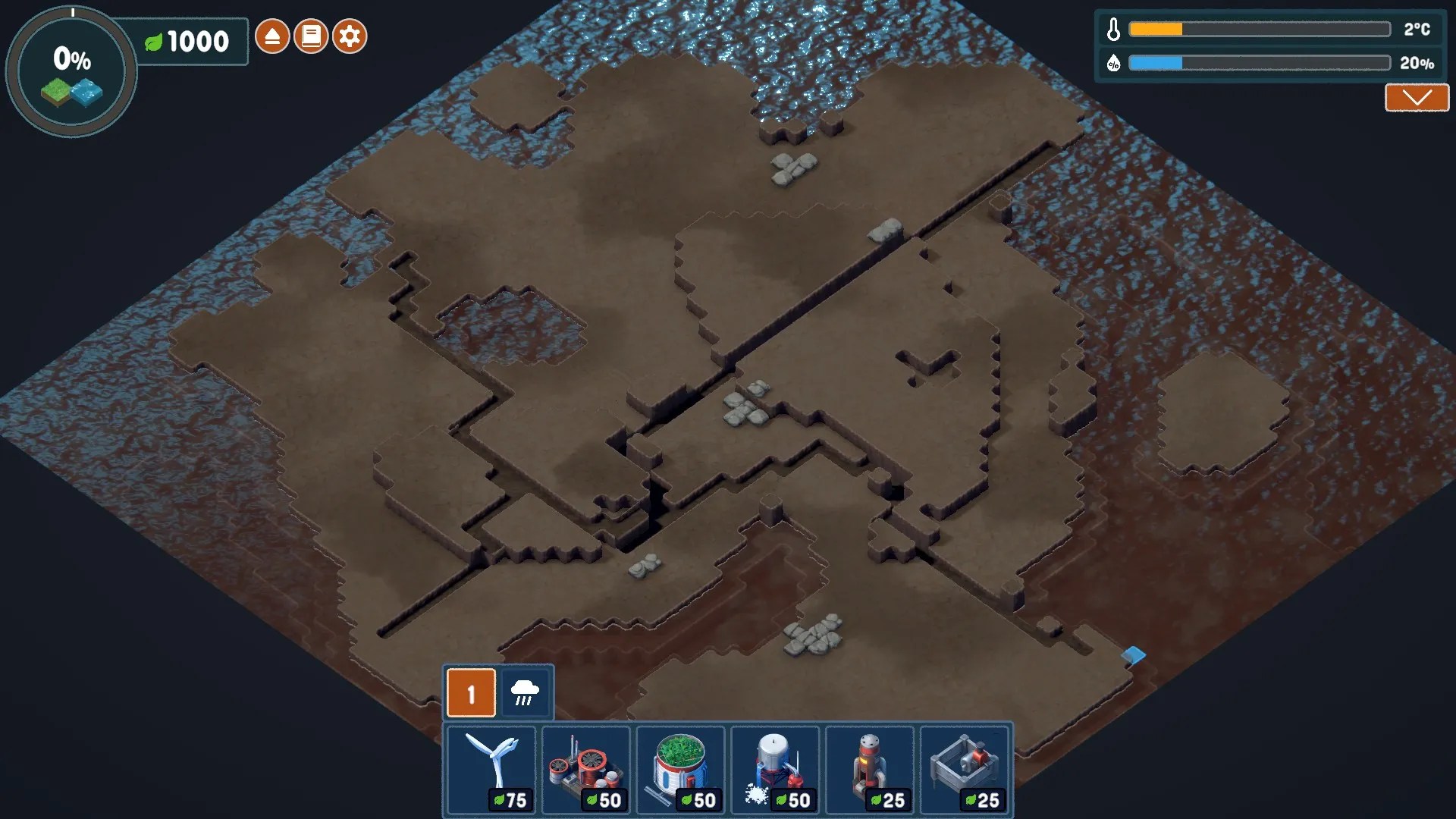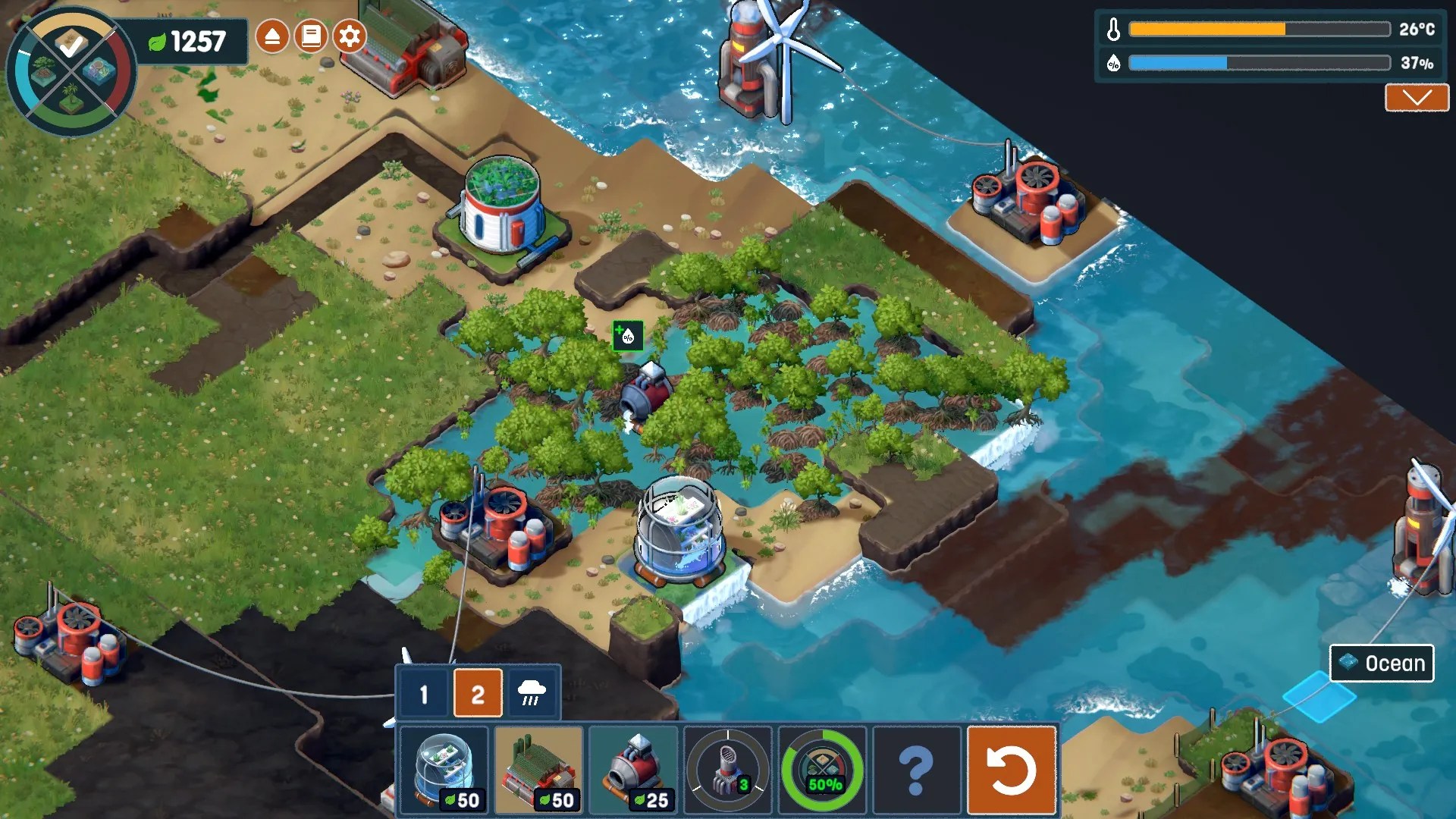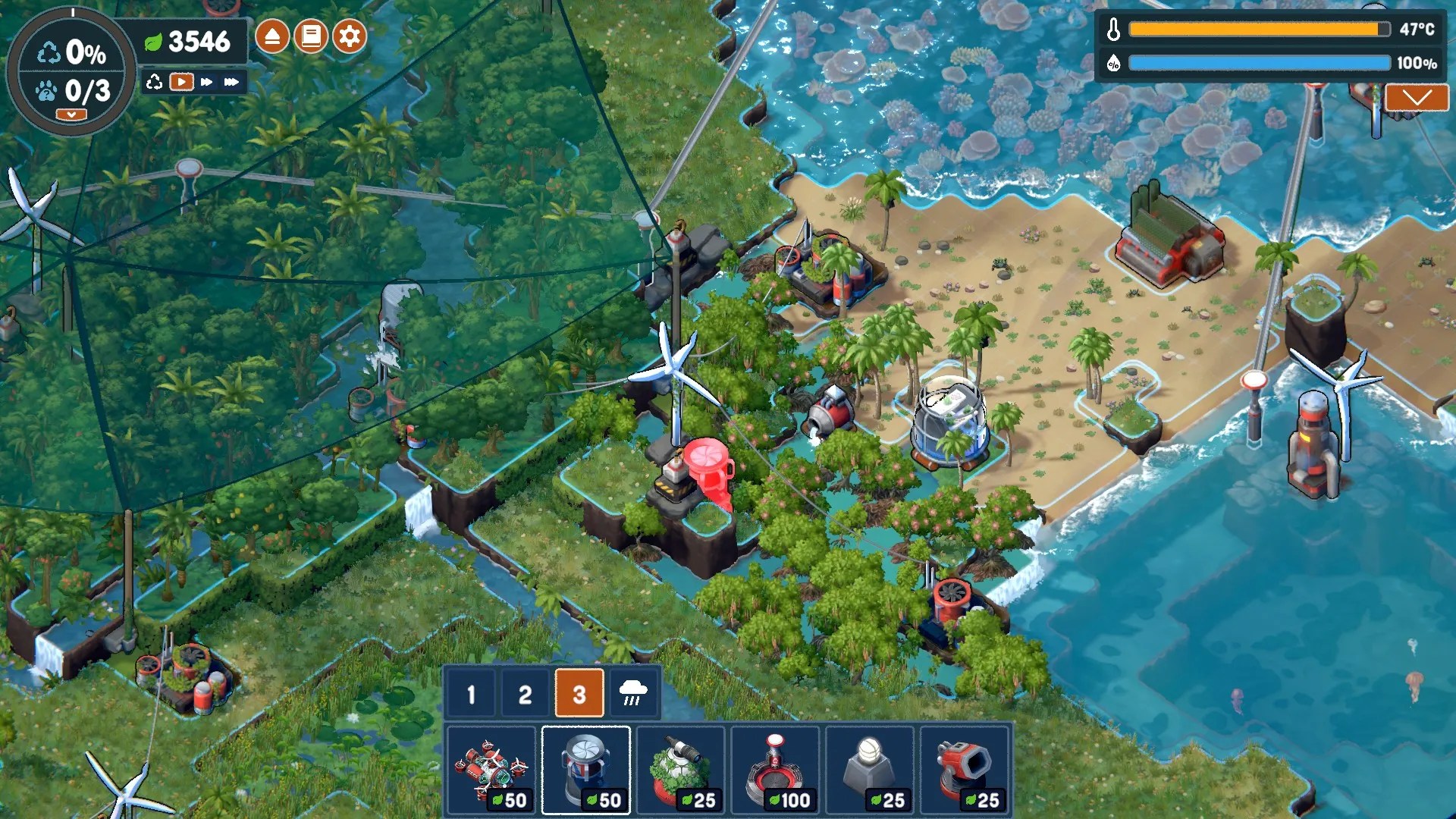The first area inTerra Nil, the River Valley, is a tutorial that covers all the basics. The second area is called the Desolate Island, and it introduces several new biomes, new game mechanics, and a new global stat players will need to modify to get all the bonus objectives.
To juggle all of this, players get a few new tools and buildings. However, the tutorial is over, andTerra Nilleaves players to figure out how to put these to use. This guide will explain how best to put these tools to use and combine them in ways that let players unlock every bonus objective and find every animal.

RELATED:Terra Nil is the Exact Opposite of Cities: Skylines
Stage 1
As the name suggests, the Desolate Island is completely surrounded by ocean. These ocean tiles are polluted, and to reach the end of stage 1 players will need to clean them up along with the land tiles.
Returning Buildings
Players start out this stagewith two tabs of buildings. The new tab is called the “climate tab,” and it holds the Cloud Seeder from the first map. In general, the buildings in this tab will modify the global stats more effectively than regular buildings. Returning to the tier 1 tab are theTurbine, the Toxin Scrubber, the Irrigator, and the Water Pump.The Water Pump is just as important on the island as it is in the River Valley, because despite the nearby ocean the river channels are dry.
TheToxin Scrubberalso has a new function: ocean cleaning. A Scrubber placed along the coast will clean ocean tiles, and this will provide leaves without needing an Irrigator to finish the job. Like an Irrigator, a Scrubber by the ocean will show a negative or positive number depending on whether players will lose or gain leaves when placing the building, but players shouldn’t worry about this. The best strategy is still to use Scrubbers to clean as many tiles as possible around each Turbine, then to use Irrigators to fill the clean tiles with greenery.

New Buildings
The tier 1 list also has two buildings players will need to unlock. The first one appears after placing three Turbines, and it’s called the Mineralizer.The Mineralizer can convert ocean tiles into rock tiles, but only in shallow water, and the number of rocks that appear is somewhat random. This is useful because the rock tiles that start on the map don’t offer enough coverage on their own.
The second tier 1 building is theSandbank. This raises a 2x2 square of sand tiles out of shallow ocean tiles,and is just the right size for a Toxin Scrubber. If the randomly generated map doesn’t have enough land to reach the stage 1 greenery requirement, a Scrubber in the ocean can help boost this number.

Bonus Objectives
Stage 1 also begins with the bonus objectives and global stats unlocked. Unlike the first map, players don’t need to build a Research Center to unlock these numbers. In fact, players get a new global stat to worry about:temperature. Most of the bonus objectives need a high temperature, a high humidity, or both, with one major exception.
Just like in River Valley, most of these optional objectives are cosmetic, but thunderstorms can clean up the whole map. The trickiest objective is the moss, which needs humidity to go up while the temperature stays low. Players should note that once an objective unlocks, it stays unlocked for good, and so it’s possible to get all 11 objectives byraising the humidity over 50 and then raising the temperature.
RELATED:Terra Nil Interview: Lead Artist Jonathan Hau-Yoon on Game Jams, Audience Engagement, and Nature
Stage 2
The Hydroponium, Combustor, & Littarium
Just like in River Valley, the first tier 2 building is theHydroponium. Players also get access to theCombustor, a new building in the climate tab. Just like Cloud Seeders, Combustors must sit on rocks, need energy, and must be spaced well apart from each other. However, while the Cloud Seeder draws on water and wetland tiles to raise the humidity, the Combustor burns greenery and other dry biomes in a radius to raise the temperature. Unlike a Solar Amplifier fire, this burn doesn’t continue past the radius and isn’t hot enough to destroy buildings.
Players must build three Combustors (though they should build some Cloud Seeders first for the moss objective) to unlock theLittarium. The Littarium is an upgrade for Toxin Scrubbers the same way the Hydroponium is an upgrade for Irrigators. Simply choose a Scrubber near some ocean tiles to convert the surrounding greenery into the beach biome.
Salinator
TheSalinatorunlocks after building 150 tiles of wetlands. Like before, the Hydroponium creates wetlands, but when wetlands touch the ocean, they become the mangrove biome. This map requires mangroves rather than wetlands, and the Salinator will convert wetlands into mangroves even when they’re far from the ocean.
Shadecloth Pillar
Players unlock theShadecloth Pillarby placing three Cloud Seeders. These Pillars must be built on the sides of cliffs, and riverbeds don’t count. Once players place three Pillars in range of each other, a tropical forest biome will appear under the triangle they create. Players can then place more Pillars to expand the area, and so long as three Pillars are in range of each other the forests will expand. In fact, players can use a single Pillar as often as they like to build these triangles. Also note that while tropical forests will tend to grow on highlands because of the pillars, they can grow on lowlands just as well.
Monorail
Once players reach 50 percent biodiversity by creating new biomes, theMonorail Nodewill unlock. The Monorail lets players move buildings around the map, although it costs 30 each time no matter what the building’s cost or size is. When placing a Monorail Node, the small green circle shows how close buildings have to be to grab, and the big green circle shows how close other Nodes have to be to connect together. These connections work the same way as the Shadecloth Pillar, but Nodes must be built on rocks. This makes the Mineralizer a great way to build up a Monorail network that crosses the entire island, and players will need to have one by the end of stage 3.
To unlock the last tier 2 building, players must relocate a building using the Monorail at least once. To do this, click on a Monorail Node, then click on a building in its range. Players should see several tiles light up near every linked Node that show where the building can go. This can include locations close to the starting Node.
Coral Lab
The final building for tier 2 is theCoral Lab. This is another Irrigator upgrade, and players must place it on an Irrigator and not a Hydroponium. Players can upgrade any Irrigator into a Coral Lab, not just the ones near water tiles. The trick is that players must use the Monorail to drop the Coral Lab into the ocean, because that’s the only way to create coral reefs, the special underwater biome.
RELATED:Free Lives Dev Discusses Terra Nil’s Stand-Out Natural Beauty Among the Studio’s Diverse Catalog
Stage 3
Just like last time, stage 3 is all aboutfinding animals and removing every building from the map. However, the methods players must use are very different.
Returning from theRiver Valley are the Airship, Recycling Silo, and Animal Observatory. However, a new building on the tier 3 list is theRecycler Station. Instead of using an airboat, players must build a Recycler Station next to the Airship, and this station connects to the Monorail network. The Monorail is the only way to clean up the map, which is why players need to connect it all together.
By building the Recycler Station, two more new buildings unlock. The first is theRecycling Beacon. Players can place it on a Monorail Node, and the Recycler Station will send a train to recycle everything nearby and then the Node itself. Unlike the airboat, the train doesn’t need to travel back to the airship. Players can save time by marking several Nodes with Beacons at once, but always remember to start with the Nodes furthest from the Recycler Station to avoid leaving anything behind.
The other new building is theRock Hopper. Place it on a rock tile to throw the rock in one of four directions, and doing so can create a spot for a new Monorail Node. The Rock Hopper is most useful for firing Mineralizer rocks inland, since the Mineralizer is the only way to create new rock tiles on this map.
TheRecycling Silois especially useful on this map. Not only does it bring buildings closer to the recycling network, like in River Valley, it removes buildings from rock tiles so players can place more Monorail Nodes. Also, the Silo doesn’t recycle Nodes the way it does other buildings.
Finding Animal Species
Like before, players will need to find three of six animal species to move on, and they’ll get extra points for finding all six.
Once players have recycled every other building and identified three of the six animals, the Recycler Station will automatically recycle itself and players can take the airship to the third location.
Terra Nilis available now on Android, iOS, and PC.